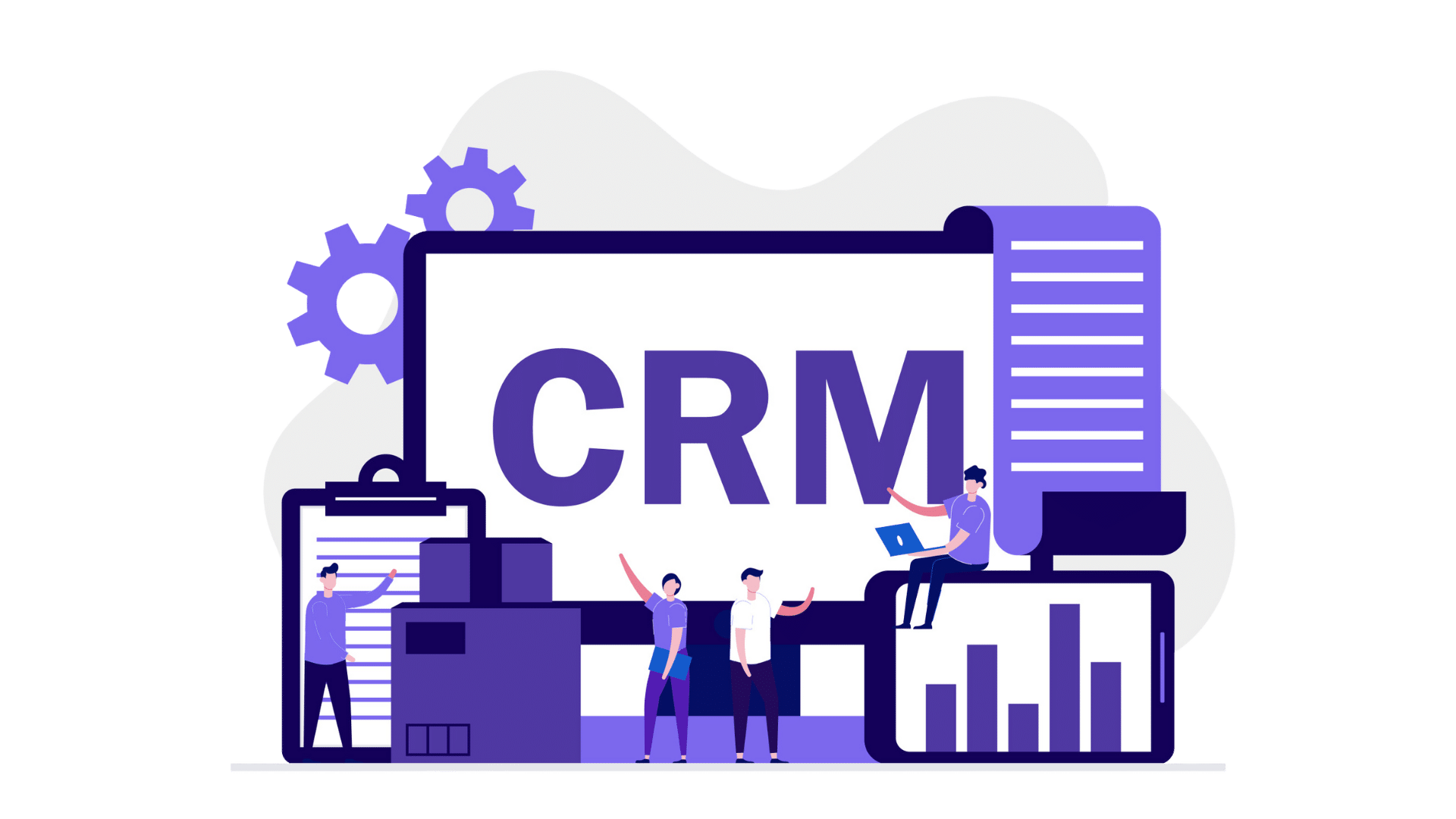
Looking to get more out of your CRM software or thinking about getting one to help streamline your business? You’re in the right place!
We’re going to break down the CRM process into simple steps that you can follow. The journey from the first touchpoint to purchase is pivotal and mastering this process can give your business an edge in a rather crowded marketplace.
A well-executed CRM strategy not only helps in managing interactions with potential and current customers but also personalises their experience to boost customer satisfaction and loyalty.
So, grab your notepad and let’s dive into how you can make every interaction count and turn those casual browsers into loyal customers with a CRM system.
A CRM (customer relationship management) process helps businesses manage and analyse customer interactions and data throughout the customer lifecycle by employing technology to organise, automate and synchronise data and operations across all departments (sales, marketing, customer and IT support).
The overall goals more or less are building customer relationships, improving customer retention and driving sales. Here’s what the CRM process entails:
Data collection: This is the first and foundational step where all relevant customer data is collected. This could include everything from basic contact information to detailed interaction histories across various channels like email, phone, social media and more.
Data analysis: Once the data is collected, it’s analysed to extract meaningful insights. What do your customers like? What are their buying patterns? What are their pain points? Understanding these aspects allows your business to serve them better.
Customer segmentation: This step involves categorising customers into groups based on similar characteristics or behaviours, making your marketing efforts more targeted and personalised.
Interaction management: Using the insights from data, your team can now manage interactions with customers more effectively. This means sending them personalised messages at the right time, responding to their queries promptly and ensuring that every touchpoint adds value to their experience.
Enhancing customer experience: Finally, the ultimate goal of the CRM process is to enhance the overall customer experience. This involves offering customised solutions, improving your product offerings, and ensuring customer satisfaction and loyalty.
Understanding these steps will not only improve the productivity of your marketing, sales and customer service efforts but also ensure you’re making the most of your CRM software. Here’s a breakdown of key CRM steps that can help you take your business to the next level:
This initial step in the CRM process is all about putting your business on the map. The goal is to not just introduce your brand to potential customers but to make it resonate with them on a meaningful level. Here’s how you can enhance your brand’s visibility using insights from your CRM software:
Targeted marketing campaigns: Use the demographic and behavioural data from your CRM to create marketing campaigns that are tailored to the needs and preferences of specific customer segments. This might include personalised email campaigns, social media ads and content marketing that speak directly to their interests and pain points. You can collaborate with Digital Marketing Companies for expert insights to refine your targeting and maximize engagement. with digital marketing companies can further enhance these efforts by providing expert insights to refine your targeting and maximize engagement.
Make decisions with accurate data: Utilise the analytics capabilities of your CRM to understand which marketing strategies are effective and which aren’t. This involves tracking engagement rates, conversion rates and other key performance indicators to continually refine your approach.
Enhancing online presence: Ensure that your website and social media profiles are optimised to attract and retain attention. SEO strategies should be employed to improve visibility in search engine results, making it easier for potential customers to find you when they’re searching for solutions you offer. Consider employing an AI logo generator to create distinctive logos that align with your brand identity and make a memorable impression on visitors.
Leveraging customer feedback: Encourage and analyse customer feedback to understand public perception and the strengths and weaknesses of your brand. This feedback can guide marketing strategies and help in tailoring the brand message to better meet customer expectations.
Once your brand is on potential customers’ radar, the next crucial step is engaging with them and capturing their details in your CRM system. Here’s how you can effectively capture and manage leads:
Optimised lead capture forms: Place well-designed lead capture forms on your website and social media platforms. Ensure these forms are straightforward and ask for essential information such as names, email addresses and interests, which can help tailor future communications.
Webinars and virtual events: Host webinars and other online events that require registration. This not only provides value to participants but also helps collect valuable data that feeds into your CRM, giving insights into what topics or products the attendees are interested in.
Email newsletters and subscriptions: Encourage website visitors to subscribe to your newsletters. Offer them valuable insights and updates in return for their contact information. Regular newsletters keep your brand at the top of subscribers’ minds while gradually nudging them down the sales funnel.
CRM integration with social media: Integrate your CRM software with social media platforms like Facebook, Instagram, etc., to automatically capture lead information from social interactions. This includes contact details of users who engage with your social posts or ads, allowing you to retarget them with more personalised advertisements.
Turning leads into customers is a pivotal moment in the CRM process. Here’s how to effectively transform interested leads into loyal customers:
Personalised communication: Use the data gathered from your CRM to tailor communications to the specific needs and interests of each lead. This could be through personalised emails, targeted offers or custom content pieces, which can be created with the best ChatGPT apps, depending on their preferences and previous interactions.
Lead scoring and prioritisation: Implement lead scoring systems within your CRM to prioritise leads based on their activities and engagement levels. This helps your team use their time and resources more efficiently by focusing on leads that are most likely to convert.
Sales follow-ups: Develop a structured follow-up strategy to keep potential customers engaged. This could include a mix of emails, phone calls and in-person meetings to discuss further details about the products or services they are interested in.
Demos and trials: Offer demos and/or free trials to give leads a hands-on experience with your product or service. This can significantly boost conversion rates by showing the real value of what you’re offering.
Objection handling: Equip your team with the necessary tools and training to handle common objections that leads may have. Understanding these objections and preparing responses in advance can make the conversion process smoother and more effective.
Closing the deal: Teach your sales team different ways to close a sale. For example, with a summary close, they can recap key points to remind the customer of the benefits. Or, with an assumptive close, they can act as if the customer has already decided and move to the next steps. The right approach can make finalising the sale easier.
Once a lead becomes a customer, providing excellent customer service is crucial for developing loyalty and encouraging repeat business. Here’s how to use your CRM to deliver top-notch customer support:
Access to first-party customer data: Utilise your CRM to provide your service team with complete customer histories, including past purchases and interactions. This allows for personalised and contextual support, enhancing customer satisfaction.
Quick issue resolution: Leverage the data in your CRM to quickly identify and resolve issues, minimising customer inconvenience. Automated ticketing and tracking can help streamline this process.
Feedback loops: Encourage and track customer feedback through your CRM. This not only helps in refining your product or service but also shows customers that their opinions are valued and acted upon.
Proactive service: Use insights from your CRM to anticipate customer needs and address potential issues before they become problems. This proactive approach can significantly improve customer satisfaction and loyalty.
Securing a sale is just the beginning. Here’s how you can leverage your CRM to drive upsells and ensure ongoing customer loyalty:
Targeted upselling opportunities: Use your CRM to analyse purchase patterns and customer preferences to identify viable upselling opportunities. Tailored recommendations can be generated based on past purchases and shown to customers at the right times.
Customer segmentation for retention: Segment customers in your CRM based on factors like purchase history and engagement level. This helps in creating customised retention campaigns aimed at keeping different segments engaged and interested in your offerings.
Loyalty programs: Integrate loyalty programs into your CRM. Offer discounts, rewards and incentives for repeat purchases, which can encourage continued engagement and enhance customer loyalty.
Regular communication: Keep in touch with customers through regular updates, newsletters and exclusive offers. Use CRM data to personalise these communications and make them more relevant to individual customers.
Now that you know the potential of CRM software and how crucial its processes are for the growth of your business, when are you getting a CRM (in case you don’t already have one)? If you indeed are on the lookout for one, do consider Telecrm (India’s most effective sales CRM). Don’t just take our word for it, book a demo today and see firsthand how you can smoothly implement the steps discussed in this blog using Telecrm with barely any effort.


© Copyright 2025 Telecrm.in - All Rights Reserved • Privacy Policy • T&C


© Copyright 2025 Telecrm.in - All Rights Reserved • Privacy Policy • T&C